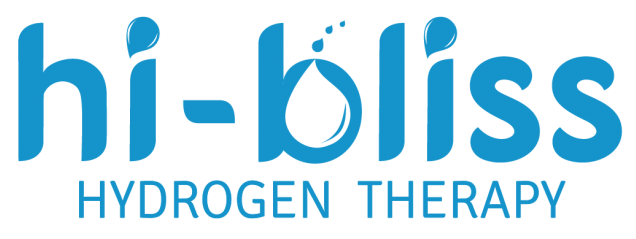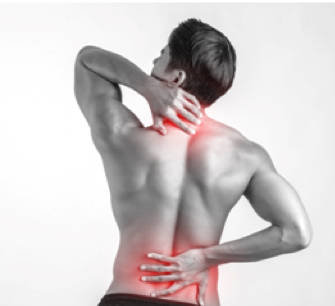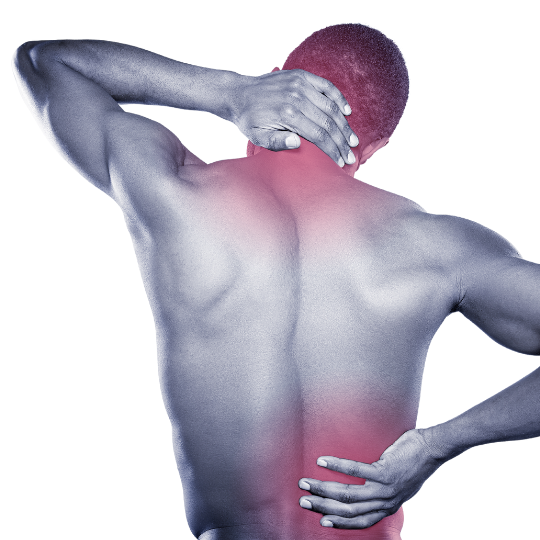Migraine is a brain disorder related to disturbances in the brain homeostasis and it leads to activation of the trigeminovascular system, stimulation of cerebral vessels’ nociceptors, and further signal transmission in the brain. Thus, further signal transmissions result in the stimulation of particular regions of the brain responsible for the clinical manifestations of migraine (triggering pain symptoms, experiencing pain or neurological symptoms). In short, Migraine is a primary headache disorder characterized by recurrent headaches that are moderate to severe. Typically, episodes affect one half of the head, are pulsating in nature, and lasts from a few hours to 3 days.
In the modern world, almost everybody suffers from a migraine disorder. According to WHO, half of the adult population will face migraines at least once within a year. Approximately 15% of the world encounters migraines. Migraine, which is the primary headache disorder, is a tensional and medication-overuse type of headache which hold a high population of health-related disability.

How to know if your headache is a migraine?
If you encounter headaches with the symptoms listed below, you might be having a migraine instead:
- Pain on the sides of the head
- An intense, throbbing or pulsing feeling
- Pain that lasts for days
- Nausea and dizziness
- Flashing lights and blind spots
- Commonly recurring pain

The four phases of a migraine
There are four possible stages to a migraine, although not everybody will experience all four phases. The four phases are the Prodrome phase, Auro phase, Pain phase and Postdrome phase.
Prodrome phase
Migraine symptoms may begin one or two days before the headache itself. The following symptoms may occur:
- Being sensitive to light, sound, or smell
- Food cravings or lack of appetite
- Mood changes, Depression
- Fatigue or low energy, frequent yawning
- Bloating, Constipation, or diarrhoea
- Hyperactivity
- Irritability
- Neck stiffness
Aura phase
The aura occurs after the prodrome phase. Clinical characteristics of the migraine aura include transient visual and sensory disturbances (uni- or bilateral) as well as motor symptoms due to recurrent brain dysfunction. Visual disturbances are reported most frequently. Aura may contribute to the so-called migrainous stroke, i.e. an episode of cerebral ischemia with neurological deficits. During an aura, you may encounter visionary, sensational, movement and speech problems. These symptoms stem from your nervous system and often involve your vision. They usually start gradually, over a 5- to 20-minute period, and last less than an hour. You may experience:
- Seeing black dots, wavy lines, flashes of light, or things that aren’t there (hallucinations)
- Difficulty speaking clearly
- Temporary losing your vision
- Tingling, prickling sensation or numbness on one side of your body
- Ringing in your ears
- Notice changes in smell, taste, or touch
Pain phase
Also known as headache attack phase. The attack phase is most acute or severe of the phases when the actual migraine pain occurs. Attack phase symptoms can last anywhere from a few hours to a few days. About 80% of people have nausea along with a headache, and about half vomit.
- Increased sensitivity to light and sound
- Nausea or Vomiting
- Pale and Clammy
- Dizziness or feeling faint
- Pain on one side of the head (either the left, right, front, back or temples)
- Pulsing and throbbing head pain
Postdrome phase
After the attack phase, an individual will often experience the postdrome stage. During this phase, there are usually extreme changes in mood and feelings. These can range from feeling euphoric and extremely happy, to feeling very tired and apathetic. A mild and dull headache may still persist.

Migraine Causes
Scientists believe that migraines can be caused by changes in the blood flow of the brain. Migraines start when overactive nerve cells send out signals that activate the trigeminal nerve (the nerve that supplies sensation to head and face). Activation of the nerve triggers the release of certain chemicals such as serotonin and calcitonin gene-related peptide (CGRP). CGRP results in the swelling of the blood vessels in the lining of the brain. This releases neurotransmitters that create inflammation and pain.
The following factors may cause or trigger migraines:
- Stress ~ When you’re stressed, your brain releases chemicals that can cause blood vessel changes that might lead to a migraine.
- Hormone Changes ~ Many women notice that they have headaches around their period, while they’re pregnant, menopause, or when they’re ovulating.
- Unhealthy Food ~ Some foods and drinks, such as aged cheese, alcohol, and food additives like nitrates (in pepperoni, hot dogs, and lunchmeats) and monosodium glutamate (MSG), may trigger migraine for some people.
- Caffeine
- Changes in weather
- Senses ~Loud noises, bright lights, and strong smells can set off a migraine.
- Fatigue
- Skipping meals
- Changes to your sleep ~ You might get headaches when you sleep too much or not enough.
- Muscle tightness especially neck and shoulder muscles
The factors above are reactive oxygen species ROS (or free radicals) in our life which are unavoidable. Imbalanced free radicals and antioxidants in our body will cause oxidative stress which can cause a migraine. When oxidative stress builds up in our body, the following will happen:
- Impaired blood circulation from rupture blood cells that reduce the total amount of oxygen that reaches the brain (contributing factors to migraine)
- Insulin resistance will become higher which can cause hyperinsulinemia (excess levels of insulin circulating in the blood), thus leading to narrowed blood vessels and eventually reduced blood flow in the brain.
- Neuro-inflammation will happen and could cause inflammatory responses that often cause the pain symptoms associated with migraines.
Free Radicals and Migraine
Oxidative stress has been known to be implicated in the pathophysiology of migraines. A study has found that increased oxidative stress is associated with migraines and contributes to migraine-related metabolic risk like nitrosative stress, an atherogenic lipid profile and hyperinsulinemia. All these oxidative stress buildup will influence brain homeostasis and inconsequence which triggers hypothalamus activation. This will lead to disruption and alteration of cortical and brainstem excitability which will result in brainstem activation. All of this will cause migraine pain. In conclusion, oxidative stress may represent a key event in the pathophysiology of migraine and is a suitable therapeutic target.
A study has found that individuals with migraines have higher levels of oxidative stress. These speculated theories pay significant attention to oxidative stress, as it has been understood as a disturbance in the reactive oxygen species (ROS) production–degradation balance. As such, this phenomenon is involved in the etiopathogenesis of numerous diseases such as atherosclerosis, reduced kidney function, or ischemic stroke. Recently, it is also considered to be one of the factors leading to the development of neurodegenerative and neuroinflammatory diseases of the central nervous system, e.g., multiple sclerosis, Alzheimer’s disease, or Parkinson’s disease.
Risk factors for oxidative stress
- Obesity
- Diets high in fat, sugar, and processed foods
- Exposure to radiation
- Smoking cigarettes or other tobacco products
- Alcohol consumption
- Certain medications
- Pollution
- Exposure to pesticides or industrial chemicals
Hydrogen Therapy and Migraine
Molecular hydrogen, which is the most powerful and smallest antioxidant, can penetrate through the blood-brain-barrier which is located deep inside our body and enter the cells of the brain to neutralise the inflammation and damage caused by oxidative stress. It works by regulating oxidative stress and antioxidant level in the brain, stabilizing neuro-chemical dysfunction, eliminating factors contributing to insulin resistance in the brain and reducing the chronic inflammation. With these, it reduces the discomfort caused by migraine and also reduces the frequency of migraine attack.
In other circumstances, tightness on the neck and shoulder muscle which is caused by improper posture can also cause migraines as muscle tightness can restrict the blood flow to the brain, decreasing the oxygen that is able to reach the brain cells and activating the trigeminal sensory nerve that leads to migraine.
A combination of hydrogen therapy and exercise programs are able to soften the tightness of the affected muscle, thus promoting blood circulation to the brain area and neutralising oxidative stress in the brain which can reduce the frequency of migraine attack.
Hi-Bliss hydrogen therapy provides the hydrogen and physiotherapy treatments to treat migraines caused by poor blood circulation towards the brain area. These treatments can help to improve blood circulation towards the brain area and the manipulation done by our physiotherapist can help further soften the affected muscle tightness. We use hydrogen gas to suppress the inflammation caused by free radicals and promote the healing process in the affected area. Our physiotherapist provides manual therapy and exercise to the client so that it can help the body absorb hydrogen more effectively.
Exercise is also very important to the body. Regular exercise can reduce the frequency and intensity of headaches and migraines. The body releases endorphins when exercising and they are the body's natural painkillers. Exercise reduces stress and helps individuals to sleep at night.
Stress and inadequate sleep are two migraine triggers. Some people may get headaches or migraines when they exercise. One possible reason for this is that a part of the physical reaction may be the elevation of blood pressure. This is not a reason to avoid exercising. Instead, headache and migraine patients need a plan to prevent headaches or migraines when they exercise.
Learn more how Hi-Bliss Hydrogen Therapy can help reduce Stress here: https://hi-bliss.com/our-wellness-programs/



